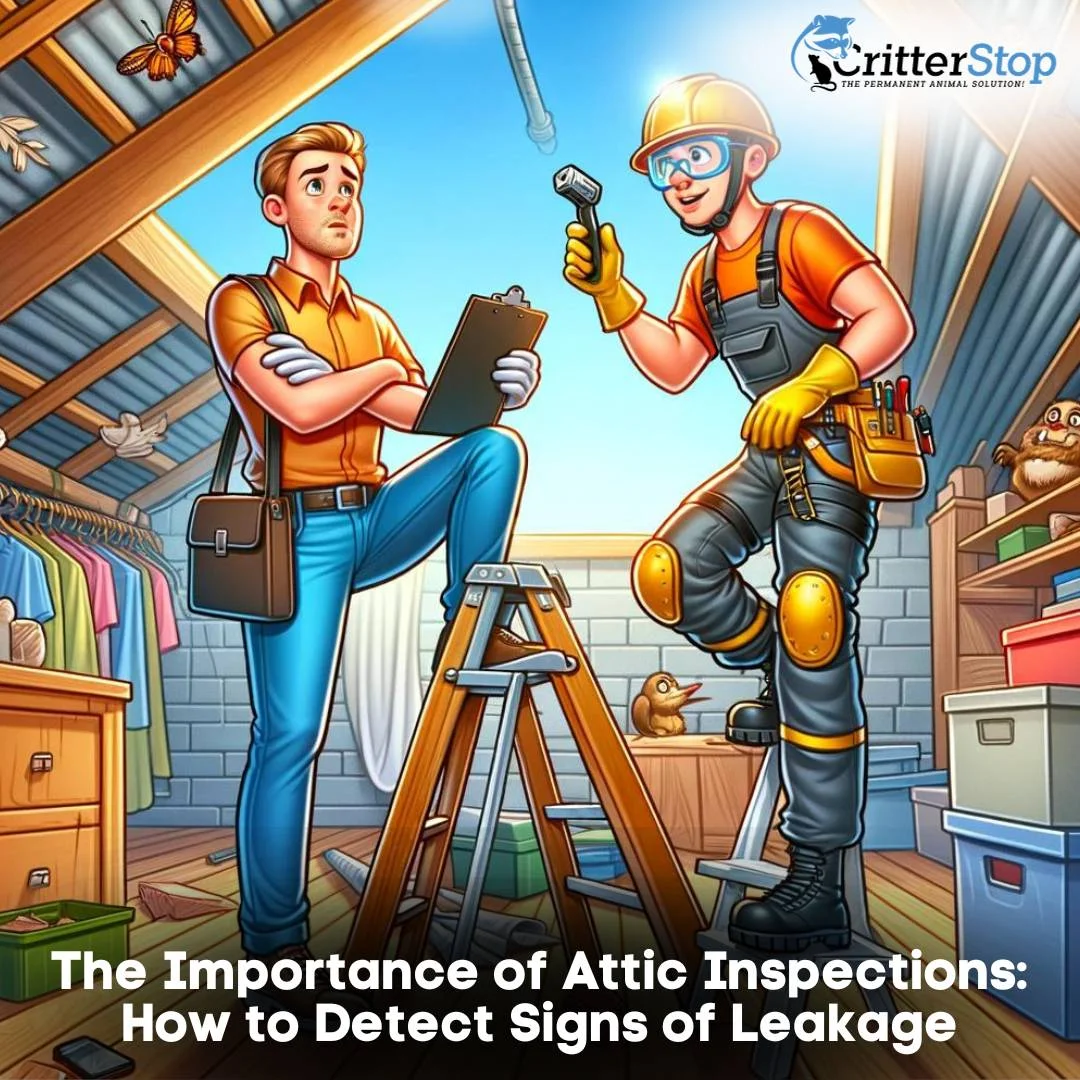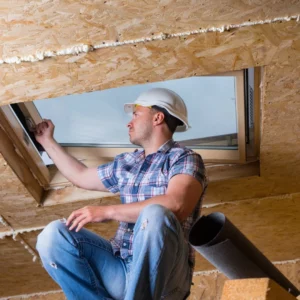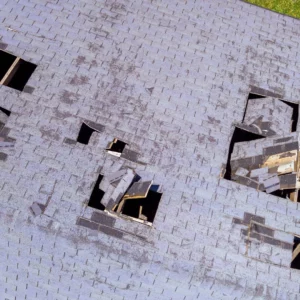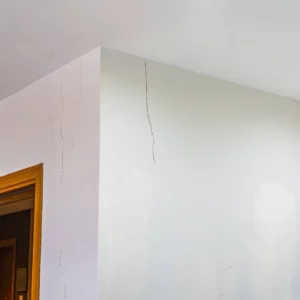
Attic inspections are an essential part of maintaining a healthy and secure home. By regularly checking your attic, you can detect signs of leakage and address them before they turn into costly and damaging problems. In this article, we will explore the importance of attic inspections and provide you with valuable information on how to identify and deal with leaks effectively.

When it comes to detecting signs of leakage in your attic, there are several common areas that you should pay close attention to.
One of the first areas to inspect is the roof. Look for missing or damaged shingles, as these can allow water to penetrate your attic. Additionally, check for any signs of water stains or discoloration on the ceiling or walls, as these can indicate a leak. It's important to note that sometimes leaks can be sneaky and not immediately visible, so be thorough in your examination. Pay attention to musty odors or dampness in the attic, as these are often signs of water intrusion. If you notice any unusual smells or moisture, it's crucial to investigate further to prevent potential damage to your home.
Another area to inspect is around chimneys and vents. These areas are prone to leaks, so make sure to examine them closely for any signs of damage or deterioration. Check the flashing around the chimney and vents to ensure it is intact and properly sealed. Over time, flashing can become loose or damaged, allowing water to seep into your attic. Inspect the attic insulation for any signs of moisture, as wet insulation can lead to mold growth and further damage to your home. If you notice any damp or wet insulation, it's essential to address the issue promptly to prevent further damage.
Lastly, don't forget to check the attic windows and skylights. Examine the seals around these openings to ensure they are intact and not allowing water to enter. Over time, seals can deteriorate, leading to potential leaks. If you notice any cracks or gaps in the seals, it's important to repair or replace them to maintain a watertight attic.

If you discover any signs of leakage during your attic inspection, it's crucial to address them promptly to prevent further water damage.
The first step is to identify the source of the leak. Once you have identified the problem area, you can proceed with the necessary repairs. This may involve sealing cracks, replacing damaged shingles, or fixing faulty flashing. It's important to consult with a professional if you are unsure about the best course of action or if the repairs require specialized knowledge.
It's also essential to ensure your attic is properly ventilated to prevent moisture buildup. Adequate ventilation helps to expel excess heat and humidity, reducing the risk of leaks and mold growth. Consider installing vents or fans to promote air circulation in your attic. Additionally, proper insulation can help regulate temperature and reduce the likelihood of condensation, which can lead to leaks.
Regularly inspecting and maintaining your roof and gutters is another effective way to prevent water damage. By keeping your gutters clean and free from debris, you can ensure that water is properly directed away from your home. Clogged gutters can cause water to overflow and seep into your attic, leading to potential leaks and water damage. Additionally, inspect your roof for any signs of damage or wear and tear. Promptly replace any missing or damaged shingles to maintain the integrity of your roof.
By being proactive and regularly inspecting your attic and roof, you can detect and address leaks before they cause significant damage to your home. Remember, prevention is key when it comes to protecting your home from water damage.
Aside from identifying and fixing leaks, it's also crucial to assess the structural integrity of your attic and property as a whole. Ensuring that your property is structurally sound is essential for the safety and longevity of your home.
When it comes to assessing the structural integrity of your property, there are several warning signs that you should be aware of. These signs can indicate underlying problems that may require immediate attention.
Some common warning signs of structural issues include sagging or uneven floors, cracks in the walls or ceiling, and doors or windows that no longer close properly. These signs may seem minor at first, but they can be indicative of more significant problems such as foundation issues or inadequate support.
It's important to note that these warning signs should not be ignored. If left unaddressed, they can worsen over time and potentially lead to more severe damage to your property.
In addition to the physical signs mentioned above, it's also crucial to pay attention to any signs of pests or wildlife infestation in your attic. Damage caused by rodents or other wildlife can compromise the structural integrity of your property. For example, rodents may chew through support beams or insulation, weakening the overall structure.
If you notice any signs of pests or wildlife infestation, it's essential to address the issue promptly. Contact a professional pest control service to assess the situation and take appropriate measures to eliminate the infestation.

If you discover any structural issues during your attic inspection, it's vital to take immediate action to address them. Ignoring these problems can lead to further damage and put your home at risk.
The first step is to contact a professional contractor or structural engineer who specializes in assessing and repairing structural issues. They will have the expertise and knowledge to evaluate the extent of the problem and provide recommendations for repairs.
Depending on the severity of the structural issue, repairs may involve reinforcing the foundation, replacing damaged support beams, or addressing pest infestation. It's important to follow the recommendations of the professional you consult with to ensure that the repairs are done correctly and effectively.
Keep in mind that structural repairs can be complex and costly, but they are necessary to maintain the integrity of your property. Investing in these repairs now can save you from more significant expenses and potential safety hazards in the future.
In conclusion, assessing the structural integrity of your attic and property is a crucial step in maintaining a safe and secure home. By being aware of the warning signs and taking prompt action when issues arise, you can ensure that your property remains structurally sound for years to come.
When it comes to attic inspections, evaluating the performance of your insulation is a crucial aspect that should not be overlooked. Insulation plays a significant role in maintaining a comfortable and energy-efficient home environment.
One way to determine if your insulation is effective is to check for consistent temperatures throughout your home. A well-insulated home should have minimal variations in temperature from room to room. If you notice significant differences in temperature, it could be a sign of poor insulation.
Inspecting the insulation for any signs of damage is also important. Water stains or mold growth on the insulation can indicate a problem. If you find any issues, it's essential to address them promptly by replacing or repairing the damaged insulation. Ignoring these issues can lead to further damage and compromise the effectiveness of your insulation.
If your attic insulation is outdated or inadequate, it may be time to consider upgrading. Upgrading your insulation can have several benefits, including improved energy efficiency, better temperature regulation, and lower utility bills.
Consulting with insulation professionals is highly recommended when considering an upgrade. They can help you determine the best type and thickness of insulation for your specific needs and climate. Proper installation is crucial to maximize the benefits of insulation, as even the highest-quality insulation will not perform optimally if not installed correctly.
Investing in better insulation not only enhances the comfort of your home but also contributes to a more sustainable and environmentally friendly living space. By reducing energy consumption, you can minimize your carbon footprint and make a positive impact on the planet.
In conclusion, evaluating the performance of your insulation is essential for maintaining a comfortable and energy-efficient home. Regular inspections, checking for consistent temperatures, and addressing any damage promptly are crucial steps. If necessary, upgrading your insulation with the guidance of professionals can provide long-term benefits for your home and the environment.
Wildlife damage can wreak havoc on your attic and property, so it's crucial to be aware of the signs and take appropriate measures to address them.
Some common signs of wildlife infestation include droppings, gnaw marks, and signs of nesting. You may also hear scratching or scurrying noises coming from your attic, especially at night.
If you suspect a wildlife infestation in your attic, it's important to consult with a professional wildlife removal service. They can safely and humanely remove the animals from your property and implement measures to prevent future infestations.
Sealing potential entry points and implementing deterrents, such as mesh screens or motion-activated lights, can help prevent wildlife from reentering your attic.
In summary, regular attic inspections are crucial for maintaining a safe and secure home. By detecting signs of leakage, assessing structural integrity, evaluating insulation performance, and identifying wildlife damage, you can address issues promptly and prevent further damage. Remember to follow the necessary steps outlined in this article to ensure the longevity and integrity of your home.